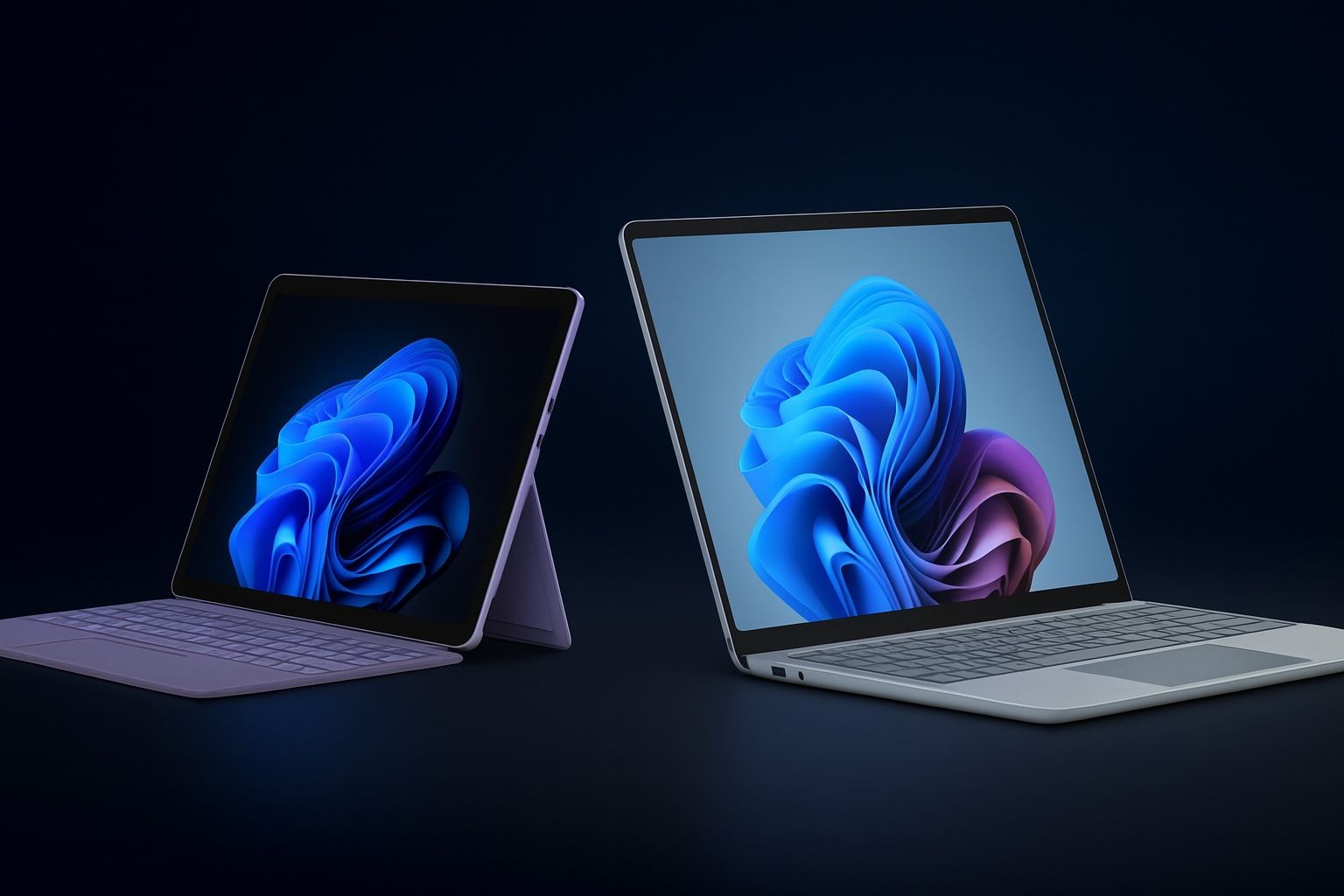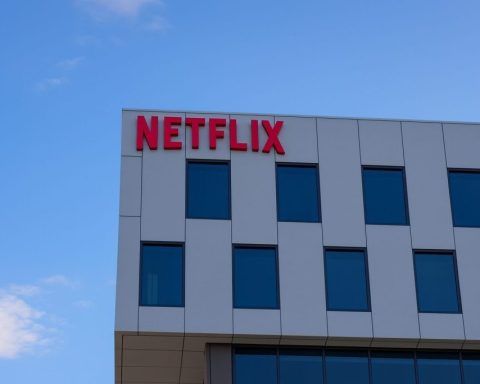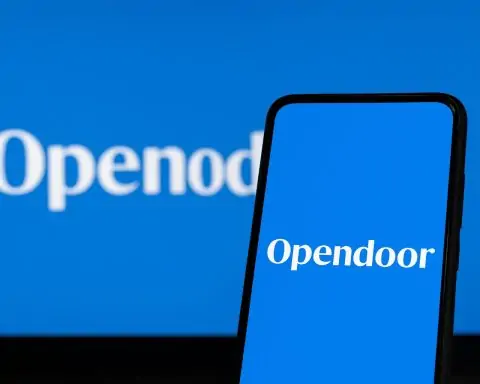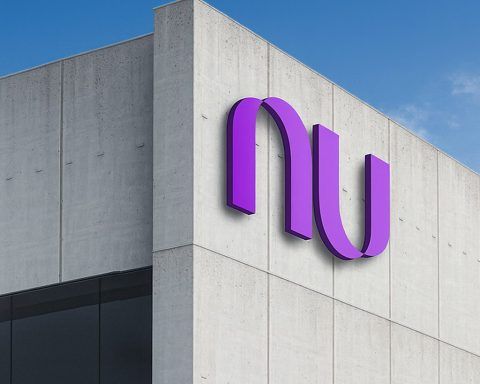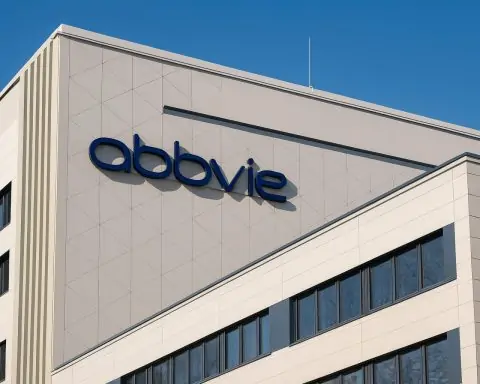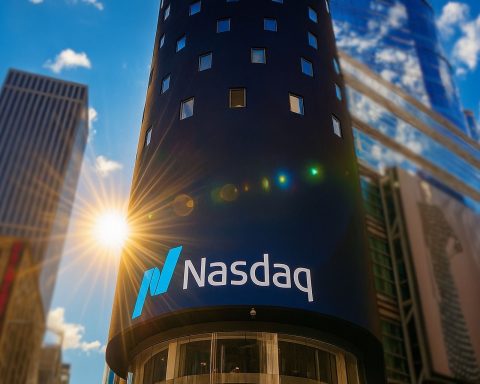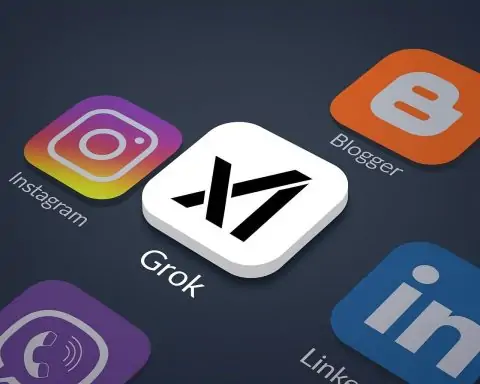- Microsoft unveiled the Surface Laptop 5G, a 13.8-inch business notebook powered by Intel’s Core Ultra with a neural processing unit capable of 40+ trillion operations per second and an integrated 5G modem, shipping in late August.
- Dell announced the Precision Pro Max 18 Plus, a workstation-class laptop supporting up to 256GB of RAM via CAMM2 memory modules, expected to ship later this year.
- Oculus founder Palmer Luckey polled users on X about buying a Made in America laptop at a 20% price premium, with almost two-thirds saying they would pay more.
- Samsung’s 2025 Neo QLED lineup introduces Samsung Vision AI, including AI upscaling to 8K and Universal Gestures on the flagship 8K Neo QLED QN950F series with a Galaxy Watch, plus up to 7 years of software updates.
- Asus announced the ProArt PA32QCV 6K monitor with a 6016×3384 resolution (218 PPI), HDR10, factory-calibrated color accuracy, DisplayHDR 600, Mini LED backlighting, and a $1,299 price.
- DJI teased its first robot vacuum, the Romo, with an August 6 launch date and a top-mounted rotating LiDAR sensor, designed to map rooms and clean without flying.
- The Matter smart-home standard gained momentum as IKEA announced Matter-compatible products, Ecovacs’ Deebot X8 Pro Omni ships with Matter, and Hunter Douglas’ PowerView blinds hub now works with Matter.
- Nothing launched the CMF Watch 3 Pro, a $99 smartwatch with native ChatGPT integration, on sale for about $79 at launch, plus 130+ sport modes, dual‑band GPS, and 13 days of battery life.
- Samsung’s Galaxy Watch 8 introduces an Antioxidant Index that estimates oxidative stress via sensors to guide recovery and wellness coaching.
- Gearbox’s Randy Pitchford said Borderlands 4 will launch on the Nintendo Switch 2 on October 3, 2025, running around 30fps with full feature parity and cross‑play with other platforms.
Laptops & PCs Get Smarter and Faster
Microsoft’s AI Laptop Arrives: Microsoft unveiled the Surface Laptop 5G, a business-focused notebook that marries ultra-fast connectivity with on-device AI prowess. Shipping in late August, this 13.8-inch laptop is powered by Intel’s new Core Ultra chipset and features a neural processing unit capable of 40+ trillion operations per second [1]. In practical terms, that means the Surface Laptop 5G can run advanced AI tasks locally – from Microsoft 365 Copilot to intelligent noise reduction – making everyday workflows “more intuitive and efficient” even without cloud help [2]. With an integrated 5G modem, users stay continuously connected, allowing real-time AI assistance and secure cloud access on the go. Microsoft says the design was driven by customer demand to “eliminate friction” in mobile work, so the laptop instantly and securely connects anywhere without hunting for Wi-Fi [3]. This marks one of the first laptops explicitly built for the AI era, highlighting how PC makers are adding dedicated AI hardware to boost productivity features.
Dell’s 256GB RAM Beast: PC enthusiasts also got a tease of extreme performance on the horizon. Dell revealed plans for a high-end workstation-class laptop (the Precision Pro Max 18 Plus) that will support a staggering 256GB of RAM thanks to its new CAMM2 memory module design [4]. That amount of memory – previously unheard of in a notebook – could prove invaluable for AI developers, engineers, and creators working with massive datasets or 8K media. The Dell machine, due later this year, opts for Intel silicon (eschewing AMD chips) and signals that PC makers are pushing boundaries in response to rising demands for AI and simulation workloads on mobile devices. As one analyst quipped, “it’s best to buy now” if you’re considering a PC upgrade, since trade uncertainties (like potential tariffs) could make high-end PC hardware even pricier down the line [5].
Palmer Luckey’s Poll on U.S.-Made PCs: In a bit of industry commentary, Oculus founder Palmer Luckey sparked discussion about tech manufacturing. He polled users on X (Twitter), asking if they’d buy a laptop “Made in America” at a 20% price premium over a MacBook. Perhaps surprisingly, almost two-thirds of respondents said they would pay more for a domestically produced laptop [6]. The informal poll – part of Luckey’s pitch for reviving U.S. electronics manufacturing – suggests growing consumer interest in locally made hardware. How Luckey’s defense-tech firm Anduril could deliver a competitively priced American-made notebook remains unclear, but the poll’s result underscores a rising sentiment: users may value supply chain resilience and origin enough to stomach higher costs. With geopolitical tensions and tariffs in play, the idea of a “Made in USA” computer has shifted from patriotic wishful thinking to a serious talking point in the tech community [7].
TVs & Display Tech: Smarter Screens, Sharper Images
Samsung’s AI-Enhanced TVs: Television tech took a leap forward as Samsung launched its 2025 Neo QLED TV lineup featuring a new built-in AI system dubbed “Samsung Vision AI.” Announced at a media event in South Africa on July 16 (and rolling out globally this month), the latest 8K and 4K Neo QLED Mini LED sets use AI to intelligently enhance both picture and sound [8] [9]. Samsung Vision AI dynamically optimizes image quality scene-by-scene and calibrates audio in real time for more immersive sound. In a flashy demo, Samsung showed that you can even control the TV with a wave of your hand while wearing a Galaxy smartwatch – a feature called Universal Gestures that turns your watch into a gesture controller for the TV [10]. The new Neo QLEDs also come with an updated Tizen interface and up to 7 years of software updates, ensuring these TVs will stay smart over the long haul [11]. “Great picture and immersive sound are just the beginning of what shoppers are looking for,” said Nivash Ramsern, Samsung’s director of visual display, adding that “enhanced connectivity, smart features and ease of use are more important than ever” [12]. On the flagship 8K Neo QLED models (QN950F series), Samsung is using its most advanced AI-powered video processor to upscale any content to 8K and even let users control certain apps with hand motions [13] [14]. These sets also tout an anti-glare screen and up to 240Hz motion processing, catering equally to cinephiles and next-gen console gamers. The message was clear: 2025 TVs aren’t just about higher resolution, but about smarter viewing through AI personalization and futuristic interfaces.
Affordable 6K Monitors Challenge Apple: In the world of high-res displays, Asus announced a ProArt 6K monitor that undercuts Apple’s Pro Display XDR by a wide margin [15] [16]. The new Asus ProArt PA32QCV offers a pin-sharp 6016×3384 resolution (218 PPI) with HDR10 support and factory-calibrated color accuracy – essentially matching many specs of Apple’s $4,999 reference monitor – but is priced at only $1,299 [17] [18]. Creative professionals on a budget welcomed the news: finally, a prosumer 6K display within reach. Asus’s 32-inch panel hits DisplayHDR 600 certification for impressive contrast and brightness [19]. While it uses Mini LED backlighting instead of OLED, Asus claims its calibrated colors and 10-bit depth will satisfy video editors, photographers, and designers who need true-to-life visuals without the eye-watering price. The ProArt’s debut, slated for the coming weeks, highlights how competition in display tech is heating up – even beyond TVs. With Acer, LG, and others also launching high-resolution monitors (and Sony pushing QD-OLED TV prices down earlier in the year), consumers and professionals alike are benefitting from greater choice. In short, ultra-sharp screens are becoming more accessible, and even Apple’s dominance in premium displays is being challenged [20] [21].
Smart Home & Appliances: Homes Get Connected (and Clean)
DJI’s Robot Vacuum Teased: The smart home sector saw an unlikely new player enter the arena – drone-maker DJI. Long rumored to be branching out from quadcopters, DJI is indeed about to launch its first robot vacuum, nicknamed the “DJI Romo.” On July 24, a trusted DJI leaker shared an official teaser video on social media, confirming an August 6 launch date for the device [22]. The teaser gave a clear look at the robo-vac’s unusual design, which features what appears to be a rotating lidar sensor up top (perhaps a nod to DJI’s expertise in navigation tech). “Before you ask, no, it won’t be able to fly,” joked TechRadar, noting that the Romo is firmly grounded but aims to “spin your world” clean in a literal sense [23]. This move pits DJI against the likes of iRobot (Roomba) and Roborock in the premium robovac space. Insiders speculate the Romo will leverage DJI’s formidable computer vision and SLAM mapping tech – essentially giving it drone-like spatial awareness to maneuver expertly around furniture. With smart home gadgets converging, DJI’s entrance is a sign of the times: consumer robotics and IoT are hot markets, and even companies famed for flying cameras want in on your living room. Expect the Romo to sync with DJI’s apps and possibly even tie into security drones or cameras for a broader home ecosystem play. Pricing hasn’t been announced, but given the “unusual-looking” design and DJI’s brand, it will likely target the high-end Roomba segment. For consumers, it’s exciting (if a tad amusing) to see a company known for drones now tackling dust bunnies.
Matter Momentum – IKEA & More: Meanwhile, the effort to make all your smart gadgets talk to each other is gaining serious steam. The new universal Matter standard for smart home devices saw several big endorsements this week. IKEA announced a suite of new smart home products (from lamps to sensors) that are “all in” on Matter for easy multi-platform compatibility [24]. And robot vacuum maker Ecovacs revealed its latest Deebot X8 Pro Omni will ship with Matter support out-of-the-box [25], ensuring it can seamlessly integrate with Alexa, Google Home, Apple HomeKit, and beyond. Even smart blinds got an upgrade: window-covering giant Hunter Douglas said on July 23 that its PowerView blinds hub now works with Matter, unifying control with other devices [26]. This flurry of Matter news reflects a broader trend in smart homes – the days of walled gardens are (hopefully) ending. As the Connectivity Standards Alliance noted, many companies are rolling out Matter updates so that “all the smart home devices can play nicely” together [27]. For consumers, this means you’ll be able to mix-and-match brands without worrying if, say, your Google Nest hub can control your Amazon Ring doorbell or your Apple Siri can dim your Samsung bulbs. The promise of one standard to rule them all is finally becoming real. Tech observers point out that with Matter, the smart home is shifting from a niche hobbyist realm into a more mainstream, user-friendly phase where devices just work – securely and interoperably – right out of the box [28] [29].
Apple’s Home Ambitions & Robot Rumors: On the fringes of the smart home discussion, an interesting scoop emerged: Apple’s much-speculated smart home robot project (think a mobile Siri-on-wheels) is reportedly being reworked. According to Bloomberg’s Mark Gurman, Apple has “scrapped some planned features” for the home robot, refocusing the concept [30]. While Apple hasn’t even confirmed such a product exists, insiders suggest the company is tempering expectations and aiming for a more modest device (perhaps a smart display or advanced speaker) rather than a full-blown Rosie-the-Robot helper. It’s a reminder that even trillion-dollar tech giants find the smart home a tough nut to crack. For now, Apple is doubling down on its existing HomePod speakers and the upcoming iPad-based Home Hub, leaving the field of actual household robots to others. Still, the fact that Apple is exploring robotics underscores how integral the smart home has become to big tech’s vision of our future living spaces.
Wearables & Health Tech: AI on Your Wrist
Nothing’s ChatGPT-Powered Smartwatch: The line between wearables and AI blurred further with a new launch from UK-based startup Nothing. Known for its flashy transparent smartphones and earbuds, Nothing (led by OnePlus co-founder Carl Pei) has introduced the CMF Watch 3 Pro, a $99 smartwatch loaded with AI features [31]. In fact, as of launch day it’s on sale for just $79 – an almost shockingly low price given the specs. This stylish circular watch comes with built-in ChatGPT integration, essentially putting OpenAI’s powerful assistant on the wearer’s wrist [32] [33]. Users can press a button and ask questions or issue commands naturally, and ChatGPT will respond with answers, set reminders, transcribe voice notes, and even generate custom watch faces on the fly [34]. “Ask anything, get an answer from your watch” is the pitch – making this one of the first smartwatches with a native large-language model assistant. Beyond the AI tricks, the CMF Watch 3 Pro doesn’t skimp on fitness: it boasts dual-band GPS, 130+ sport modes, blood oxygen and heart-rate tracking, and a durable 13-day battery life [35] [36] – competitive with watches costing three times more. Andrew Freshwater, Nothing’s head of smart products marketing, calls the Watch 3 Pro “the perfect starting point for anyone beginning their health and fitness journey,” emphasizing its blend of wellness tools and AI smarts [37]. Importantly, Nothing is positioning this as an affordable alternative to Apple and Samsung watches, which lack such deep AI integration out-of-box. The launch underscores a broader trend: AI is rapidly coming to wearables, enabling new use cases like voice-assisted note taking and real-time visual coaching (e.g. using the watch’s camera for prompts). For consumers, a sub-$100 smartwatch with ChatGPT-on-demand is a tantalizing prospect – and a sign that future Apple Watches and Galaxy Watches may need to up their AI game.
Samsung’s Wellness Push: Not to be outdone in the wearables space, Samsung provided a sneak peek at an innovative health feature in its upcoming Galaxy Watch 8. Tech journalists got to try the Watch 8’s new “Antioxidant Index” – a feature that measures users’ oxidative stress levels (essentially an indicator of health and recovery) via the smartwatch’s sensors [38]. As one reporter quipped, it became a favorite feature after testing it on a group of “tired tech journalists” following a long day at a press event [39]. The antioxidant index uses bioelectrical sensors to estimate the balance of oxidants and antioxidants in the body, potentially alerting users if they’re overstressed or in need of recovery. This kind of biomarker tracking goes beyond the usual step counts and heart rates, edging into territory usually reserved for advanced medical devices. Samsung’s emphasis on holistic wellness tech – from ECG and blood pressure (in current models) to new metrics like antioxidants – shows wearables becoming personal health guardians. The Galaxy Watch 8, expected to launch later in the year, will likely integrate tightly with Samsung’s S Health app and possibly use AI to provide personalized health coaching. Combined with Google’s new AI-powered Wear OS updates (more on that below), smartwatches are clearly evolving from simple notification gadgets into AI-enhanced health monitors that can proactively guide users toward better well-being.
Google Unifies Wearables and AI: Indeed, Google made a significant announcement in late July that will impact the next generation of wearables and portable devices: it confirmed plans to merge ChromeOS into Android, creating one unified operating system optimized for AI across all device form factors [40] [41]. This strategic shift, driven by Google’s upcoming Gemini AI, means future Android-based gadgets – from phones and foldables to tablets and watches – will share one platform with consistent AI capabilities. The goal is to bake Google’s generative AI (Gemini) directly into everything. For wearables, that’s huge. Starting with Samsung’s Galaxy Watch 8, Google is replacing the old Assistant with a new Gemini AI assistant on Wear OS 6, enabling far more natural, context-aware interactions on your wrist [42] [43]. Reviewers say the upgrade will make the watch feel like a true smart companion rather than a basic voice command toy: you’ll get detailed answers, follow-up questions, and proactive suggestions based on activity (for example, coaching you through a workout or suggesting a meditation if your stress is high) [44] [45]. By unifying its OS and AI efforts, Google is clearly gearing up to compete with Apple’s ecosystem by offering AI everywhere – accessible via voice, text, or camera on any device. The end result for consumers? Expect your next Android smartwatch or Android-powered laptop to have an AI at the ready, whether you’re dictating messages, getting contextual info at a glance, or even asking your watch for real-time advice on your golf swing. Wearables are about to get a lot smarter and more conversational.
Audio & Entertainment Gear: High-End Features Hit the Masses
Premium Earbuds for $25: Audiophiles on a budget had reason to cheer as feature-packed wireless earbuds dropped to shockingly low prices. The accessory maker Baseus debuted its new Bass Buds BP1 Pro noise-cancelling earbuds – and thanks to a stack of discounts, they were selling for under $25 this week [46]. These aren’t cheap knock-offs, either: for that tiny price, you get adaptive active noise cancellation with a six-mic array, support for Sony’s LDAC codec (for hi-res audio over Bluetooth), and even Bluetooth 6.0 connectivity [47]. (Bluetooth 6.0 isn’t officially out yet, but Baseus is using the term to imply next-gen wireless performance). The buds boast a long battery life and water resistance as well. “If I asked you to guess the price… you’d start with a three-digit number,” wrote one reviewer – yet here they are for under $30 [48]. The BP1 Pro’s triple-discounted sale (down from a $39.99 list price to ~$23.78) exemplifies how fast audio tech is commoditizing [49]. Features like high-bitrate audio and ANC, once exclusive to $200+ earbuds from Sony or Apple, are now filtering down to ultra-budget models. For consumers, the audio “arms race” is yielding an unexpected dividend: great sound and silence for the price of a few lattes. Of course, questions remain about longevity and support on such cheap buds, but brands like JLab, Soundcore, and now Baseus are proving that quality audio is no longer a luxury. The audio world, as TechRadar put it, “has gone loopy” when you can snag LDAC-equipped ANC earbuds for a song [50].
Hi-Fi Turntables Go Back to Basics: Vinyl lovers also saw new gear that mixes high fidelity with affordability. Famed turntable maker Pro-Ject announced the E1.2 turntable, a stripped-down $339 deck (£249 in the UK) designed to deliver premium sound by cutting all the frills [51]. Unlike many modern record players, the E1.2 says “boo to Bluetooth and uh-uh to USB,” omitting wireless streaming, USB outputs, built-in preamps, and even auto start/stop features [52] [53]. It’s purely an analog machine focused on core quality: a solid plinth, decent cartridge, and Pro-Ject’s well-regarded motor and tonearm engineering. In essence, the E1.2 gives you the same fundamental components as Pro-Ject’s more expensive models, but at a budget price – provided you’re willing to bring your own phono preamp or amplifier with phono input [54]. This “back to basics” philosophy garnered mixed reactions. On one hand, purists applauded an affordable audiophile turntable that cuts the gimmicks. On the other, beginners might find the lack of conveniences “one cut too far,” as it requires extra gear and manual operation [55]. Still, at a time when vinyl sales are booming (and some turntables, like recent limited editions from Technics and B&O, cost thousands), Pro-Ject is smartly catering to the entry-level audiophile who prioritizes sound over features. The E1.2 underscores a trend in audio: even as wireless smart speakers and noise-cancelling tech dominate, there’s a parallel movement of no-nonsense hi-fi gear for enthusiasts who want to unplug and just listen. And with prices coming down, that high-end analog experience is more accessible than it’s been in years.
Audio-Visual Crossover – Lego’s Boombox Nostalgia: In a fun bit of audio/entertainment crossover news, LEGO unveiled a limited-edition buildable 1980s boombox at San Diego Comic-Con, complete with bricks that resemble speaker woofers and a cassette deck. (While not a functioning audio device, it comes with a digital playlist of retro hits to set the mood.) This whimsical release, alongside LEGO’s also-unveiled brick-built vintage Game Boy, taps into the nostalgia for classic tech. It’s proof that even in 2025, the design of old-school gadgets – from turntables to boomboxes – holds a cultural cachet, inspiring new products that celebrate the past. As streaming and voice assistants conquer audio, physical media and devices have become beloved art forms. The resurgence of vinyl and even cassette culture suggests that tangible music experiences still resonate, even as AI DJs and spatial audio vie for our ears.
Gaming, AR & VR: Next-Gen Consoles and Mixed Reality
Nintendo Switch 2 Incoming: The gaming world got perhaps its biggest news of the year as Nintendo’s next-generation console effectively broke cover. While Nintendo itself remains tight-lipped, Gearbox Software CEO Randy Pitchford spilled the beans: in a social media announcement, he revealed that Borderlands 4 will launch on the new Nintendo “Switch 2” console on October 3, 2025 [56]. That places the Switch successor’s release in late September or very early October, aligning with long-running rumors of a Fall 2025 debut. Pitchford’s video message confirmed that Nintendo’s long-rumored hardware is real – and imminent. He also gave a sense of its capabilities: the Switch 2 version of Borderlands 4 will run “mostly around 30fps” and maintain full feature parity and cross-play with the game’s versions on more powerful platforms [57]. “It was important to us to not cut anything” for Switch players, Pitchford emphasized, explaining the decision to cap at 30 frames per second for consistency [58]. In other words, the new Switch will be modern enough to handle a big 2025 open-world shooter – albeit at lower framerates – without needing special dumbed-down editions. This is a huge deal for Nintendo fans: it implies the Switch 2 likely has significantly upgraded hardware (reports point to an Nvidia chip capable of technologies like DLSS upscaling) to run current-gen games. The fact that a major third-party title hits it just three weeks after other consoles shows Nintendo is courting broader support. The “Switch 2” (working title) is expected to retain the hybrid portable design but with a sharper display and beefier internals. By early October, players will finally have it in hand – and Nintendo’s famously quiet approach to console reveals was upended by an eager partner. The countdown to Switch 2 has officially begun, marking Nintendo’s first new console launch since 2017 and setting up a showdown this holiday season in the gaming market [59] [60].
Sony’s PS5 Gets Power-Saving and Peripherals Freedom: Current-gen console owners aren’t left out of the news. Sony announced a substantial PS5 system software beta that brings two notable features: multi-device pairing for DualSense controllers and a new Power Saver mode for games [61]. The DualSense controller update is a boon for gamers with multiple devices – it will let the PS5’s wireless gamepads pair simultaneously with a PS5, a PC, and even upcoming Sony handhelds or mobile devices [62] [63]. This means you can switch your DualSense from playing on console to playing on your PC (or cloud gaming on a tablet) without re-syncing every time. Sony said enabling cross-platform compatibility of peripherals “creates a more flexible and seamless gaming experience” [64]. It’s an important step toward a more platform-agnostic ecosystem, recognizing that gamers often use one controller across consoles and PCs. The new Power Saver mode, meanwhile, addresses energy consumption: supported PS5 games will be able to run in a lower-power state that conserves electricity (likely by capping frame rates or resolution) [65]. This mode, introduced in the beta and rolling out later, could be useful for less intensive sessions or for eco-conscious gamers – essentially an acknowledgment of growing concerns around console power usage. With some blockbuster games driving the PS5 to draw considerable wattage, having a toggle for efficiency is a smart, timely addition (and ties into Sony’s broader sustainability pledges). These updates also hint at what might come in a PS5 Pro or Slim revision, expected possibly in 2025: better power management and more openness in accessories. Sony is listening to feedback, making sure the PS5 platform stays robust and user-friendly as it matures.
VR/AR on the Horizon: While July 23–24 didn’t bring a new VR headset launch, the signs of the next wave in AR/VR hardware are everywhere. Meta and Google are gearing up for a mixed reality battle: Meta’s partnership with Ray-Ban (smart camera glasses) has been successful enough to sell “millions” of units [66] [67], and just a few weeks ago Meta teased its Oakley Meta AR glasses – sporty sunglasses with built-in speakers, cameras, and AI Coach features aimed at athletes [68] [69]. Those Oakley Meta glasses, launching later this summer for $399+, will even have Meta’s AI assistant on board to answer questions and give performance feedback (e.g. telling a golfer how wind might affect a shot) [70] [71]. It’s a glimpse at how augmented reality is creeping into consumer life not via heavy headsets, but via familiar form factors like sunglasses. Google, for its part, appears to be folding some AR ambitions into its Android strategy (as mentioned, allowing its Gemini AI to use phone cameras for “see what I see” functionality – essentially proto-AR experiences where the AI can give context to what your camera is pointed at [72] [73]). And rumors persist of a Samsung/Google XR headset in the works to compete with Apple’s Vision Pro, though nothing was announced in this two-day window.
Speaking of Apple’s Vision Pro, while not a focus of late July news (it was unveiled in June), its presence looms large. The $3,499 mixed reality headset is slated for early 2024, and developers have started receiving units to craft apps. The industry chatter suggests a renewed “XR gold rush”: Meta, Google, Valve, and others are investing heavily to not be left behind. Even smaller players like HTC and Lenovo are launching niche VR devices for specific use cases. The takeaway is that consumer electronics are extending into immersive realms – and soon, our roundup of “consumer gadgets” may regularly include AR glasses or VR wearables. For now, traditional gaming is king, but every major console maker is exploring AR/VR: Sony’s PSVR 2 is gradually expanding its library, and Nintendo patent filings suggest experimentation with AR features for Switch 2. In short, the lines between gaming, computing, and reality itself are blurring, with AI as the connective tissue.
Chips & Components: AI Boom Amid Tariff Jitters
Chip Demand Soars with AI: The semiconductor industry’s quarterly check-in revealed a tale of two trends. Global demand for advanced chips is red-hot, thanks to the AI frenzy, even as broader electronics markets remain mixed. Industry bellwether TSMC (the world’s top contract chipmaker) announced a record $13.5 billion net profit for Q2 2025, a staggering 60% jump from a year ago [74] [75]. The boom is fueled by “stronger and stronger” orders for AI-focused processors – think the GPUs and specialty AI chips that power data centers and services like ChatGPT [76] [77]. Nvidia, one of TSMC’s key clients, can’t get enough of TSMC’s capacity for its high-end AI chips. TSMC was optimistic enough to raise its full-year revenue forecast, and Q3 sales are expected to leap ~40% year-on-year [78] [79]. Yet, even with demand outpacing supply in some segments, TSMC’s CEO C.C. Wei struck a cautious tone. He warned that looming U.S. tech export restrictions and tariffs could cloud the outlook by Q4 [80] [81]. With reports that the U.S. may further curb chip sales to China and impose new tariffs, TSMC and peers are wary. “We are becoming more conservative,” Wei said, noting the company is bracing for possible geopolitical headwinds later this year [82] [83]. Notably, TSMC isn’t slowing its investments – it’s still planning up to $42 billion in capital expenditure to build new fabs and expand capacity globally [84] – but it is keeping a closer eye on policy moves.
Trade Tensions Hit Consumer Chips: Those policy worries came into sharp relief with Texas Instruments (TI), the U.S. analog chip giant. TI surprised investors with a weaker outlook, and its stock plunged ~11% after execs said new U.S. tech tariffs may be distorting buying patterns [85] [86]. TI’s CEO Haviv Ilan noted they “can’t rule out” that some of the recent sales bump was from customers rushing orders before tariffs hit – a sign of jittery demand [87] [88]. Analysts observed TI’s tone had shifted “markedly cautious” on geopolitics [89]. In the auto chip market, for instance, an expected recovery could be “less robust” if tariffs disrupt supply chains [90]. And it’s not just TI: equipment maker ASML and memory giant Samsung have also flagged uncertainty ahead due to trade restrictions [91] [92]. The consumer electronics sector is directly in the crossfire here. As Reuters reported earlier, companies like Apple (which still makes the vast majority of its devices in China) and Amazon could face cost increases if tariffs on Chinese-made electronics kick in [93] [94]. Smartphones, PCs, and the chips inside them are all subject to these global trade winds. For now, the U.S. has mostly spared finished consumer gadgets from tariffs, focusing on components – but that could change any week. Tech firms are already shifting production (Apple, for one, is moving some iPhone assembly to India to mitigate risk [95]), yet such moves take time.
AI Chips vs. Consumer Chips: The divergence is striking: enterprise and AI chip sales are cushioning the industry, while chips for phones and PCs still face a slump. Qualcomm, which designs smartphone CPUs, warned its next quarter revenue would miss estimates, citing the chill from tariffs and a slower handset market [96] [97]. Samsung’s mobile division likewise sounded a note that “demand uncertainties are growing… as a result of recent changes in tariff policies” [98] [99]. In contrast, cloud giants like Microsoft and Google are pouring money into AI and gave upbeat forecasts, buoying their chip and server suppliers [100] [101]. This has led to a bit of a gold rush for AI chips: Nvidia’s stock has soared this year, and startups in the AI silicon space are getting huge orders (one example: startup FuriosaAI, which reportedly landed a massive customer contract instead of selling out to Big Tech, highlighting how intense the competition is for AI acceleration hardware [102] [103]). The bottom line: chips are the foundation of all consumer electronics, and right now that foundation is being tugged in two directions – skyrocketing demand from AI, and uncertainty from geopolitics. How this resolves will directly affect gadget availability and pricing in coming months. If tariffs bite harder, consumers could see higher prices or shortages in some electronics. Conversely, the AI boom could lead to trickle-down benefits – the cutting-edge tech developed for data centers often ends up in our PCs and consoles a generation later. (Indeed, Sony just added an “AI Agent” to its latest Xperia smartphone and Microsoft is touting AI co-processors in upcoming Windows PCs [104] [105].)
Industry & Policy Highlights
Apple’s Legal Win on iCloud: In legal news, Apple scored a significant courtroom victory that could have ripple effects on how tech companies advertise services. A U.S. federal appeals court rejected a class-action lawsuit that accused Apple of misleading iCloud+ subscribers over how storage was allotted [106]. The plaintiffs argued that when Apple sold a 200GB iCloud plan, users expected that on top of the free 5GB tier (for a total of 205GB). Apple’s terms instead treated it as 200GB total. The court ruled customers “received exactly what Apple promised” – 200GB overall – and that any misunderstanding was among “an insignificant segment” of users, not due to deceptive marketing [107]. The judge even analogized that it’s like assuming a diet soda would aid weight loss – a baseless assumption, not a promise from the seller [108]. This decision upholds Apple’s approach to cloud service tiers and spares the company potential damages or refunds. More broadly, it’s a win for clarity in tech service contracts. Apple (and others) will point to this case as validation that their terms, if clearly laid out in agreements, can protect against claims of implied promises. With subscription services ubiquitous in consumer electronics (cloud storage, streaming, device upgrade plans, etc.), the case highlights how legal clarity is paramount. Apple, obviously pleased, can continue business as usual with iCloud – and users now have court-backed confirmation of how those plans work. It’s a relatively small-scale class action in the scheme of Big Tech legal battles, but notable for the precedent set in service marketing.
Drone Safety Crackdown: Drones made headlines in the regulatory arena as well. U.S. officials testified to Congress that drone incidents near airports and public events have surged, prompting calls for tougher laws [109] [110]. In a July 23 Senate hearing, Homeland Security revealed there have been over 3,000 drone intrusions around U.S. airports since 2021, including 11 close calls just this year where aircraft had to take evasive action [111]. There were even instances of drones colliding with emergency response aircraft fighting wildfires in California and Texas [112] – a extremely dangerous scenario. Senators voiced alarm that current anti-drone measures are insufficient. “It just strikes me we are woefully unprepared,” said Senator John Cornyn, while Senator Ted Cruz warned “drones pose an immediate and growing threat” to safety if misused [113]. Sports leagues are also pressuring Congress, as drones have been spotted buzzing over stadiums and even major events like the Boston Marathon [114]. In response, lawmakers are drafting legislation to expand authorities for drone defense: they want to broaden the ability of federal and even local law enforcement to disable or “take down” rogue drones without waiting for lengthy approvals [115] [116]. Currently, only select federal agencies (like DHS and DOJ) have such authority under a 2018 law, and only at special events or security areas – which covers things like the Super Bowl, but not the 200+ other NFL games each season [117] [118]. The proposed changes would protect more locations (airports, power plants, large gatherings) and allow state police to act. For the consumer electronics sector, this push is notable: drones are one of the fastest-growing gadget categories, and this is a sign of maturing oversight. Manufacturers might soon need to implement tech like remote ID beacons (to identify drones in flight) or geo-fencing that prevents flights near airports. It’s a classic case of tech adoption (drones for photography, etc.) leading to new regulations when misused. Hobbyist pilots will want to keep an eye on these developments, as it could mean stricter rules – and penalties – when flying in unauthorized areas.
Market Moves – Earnings Diverge: On the market side, it’s earning season and Big Tech’s fortunes are diverging. Companies heavily invested in AI (like Microsoft and Google) reported upbeat results and outlooks, while those reliant on hardware sales (like consumer devices) were more subdued [119] [120]. Microsoft and Alphabet credited AI for boosting their cloud and ads businesses and mollifying Wall Street [121]. In contrast, smartphone-centric firms like Qualcomm and even Apple have been warning that trade wars and consumer spending pullbacks could hit their bottom line [122] [123]. Apple, which was set to report earnings a week after this roundup, is particularly under the microscope – it makes ~90% of its products in China, so any tariff or decoupling measures can directly raise its costs [124] [125]. To counter that, Apple has been shifting some iPhone production to India (and considering Vietnam for AirPods) [126], but those moves will take time to scale. Amazon, with its giant online retail arm, also faces similar pressures on its gadget sales (like Fire TVs, Echo speakers, etc.) if tariffs come into play [127] [128]. One optimistic sign: so far, U.S. tariffs on China have mostly spared finished consumer electronics, focusing on components and materials [129]. But that could change – Washington has signaled some consumer tech could be on the next tariff list if trade tensions don’t ease [130].
Executives Sound Off on AI: Lastly, the AI boom has even normally cautious executives making bold pronouncements. Nvidia CEO Jensen Huang mused this week that AI will “replace all the mundane work” and boost productivity across industries – while also stressing that those who don’t embrace AI risk being left behind (though he balanced that by noting AI will create new jobs too, not just destroy old ones). And at a Fed event on July 24, OpenAI CEO Sam Altman warned of an “impending fraud crisis” due to AI’s ability to mimic voices and identities [131] [132]. Altman urged regulators and banks to shore up verification systems before deepfake audio wreaks havoc in finance (for example, AI voice cloning used to trick people into authorizing transactions). It’s not every day the tech world’s wunderkind tells the Federal Reserve to beware of AI – a sign of how mainstream these concerns have become. Altman’s warning underscores an interesting point in consumer tech: as our devices gain AI powers (smart assistants that can sound human, etc.), trust and verification will be a new battleground. We might soon see features like “authenticity fingerprints” for audio/video or devices that can detect AI fakes. Companies like Adobe are already working on content authenticity tools, and smartphone makers might integrate deepfake detection to ensure the person calling you is real. It’s a reminder that with great AI comes great responsibility – something industry leaders are actively debating.
In summary, the past two days showcased a vibrant, fast-evolving consumer electronics landscape. We saw cutting-edge laptops and TVs infused with AI for smarter experiences, and heard from industry leaders navigating the twin challenges of skyrocketing innovation and geopolitical uncertainty. Tech giants and upstarts alike are pushing new products in every category: from wearables that watch your health and consoles that usher in a new generation of gaming, to smart home gadgets that actually work together at last. The integration of AI is the common thread – whether it’s an assistant on your wrist, algorithms enhancing your TV’s picture, or AI models spurring a boom (and a scramble) in the chip sector. Consumers can be excited that many once-futuristic features (think voice-controlled everything, intelligent personal assistants, AR glasses, ultra-cheap hi-fi gear) are either here now or on the very near horizon. At the same time, the industry is wrestling with growing pains: ensuring safety (drones), privacy/security (AI and deepfakes), and supply stability (tariffs). The good news is that innovation isn’t slowing down one bit. If anything, it’s accelerating – and companies are learning to adapt on the fly. For all of us, that means an upcoming feast of new gadgets and capabilities, likely accompanied by new choices about how we integrate them responsibly into our lives. It’s an exciting time to be following consumer tech, and if this week is any indication, the rest of 2025 will have plenty more surprises in store.
Sources: Consumer electronics news reports and press releases from July 23–24, 2025 [133] [134] [135] [136] [137] [138] [139], and expert analysis from Reuters, TechRadar, and industry insiders [140] [141] [142]. (All cited content is sourced from reputable publications to ensure accuracy.)
References
1. blogs.windows.com, 2. blogs.windows.com, 3. blogs.windows.com, 4. www.techradar.com, 5. www.techradar.com, 6. www.techradar.com, 7. www.techradar.com, 8. news.samsung.com, 9. news.samsung.com, 10. news.samsung.com, 11. news.samsung.com, 12. news.samsung.com, 13. news.samsung.com, 14. news.samsung.com, 15. www.techradar.com, 16. www.techradar.com, 17. www.techradar.com, 18. www.techradar.com, 19. www.techradar.com, 20. www.techradar.com, 21. www.techradar.com, 22. www.techradar.com, 23. www.techradar.com, 24. csa-iot.org, 25. csa-iot.org, 26. matter-smarthome.de, 27. csa-iot.org, 28. csa-iot.org, 29. csa-iot.org, 30. www.macrumors.com, 31. chicagomusicguide.com, 32. chicagomusicguide.com, 33. chicagomusicguide.com, 34. chicagomusicguide.com, 35. chicagomusicguide.com, 36. chicagomusicguide.com, 37. chicagomusicguide.com, 38. www.techradar.com, 39. www.techradar.com, 40. ts2.tech, 41. ts2.tech, 42. ts2.tech, 43. ts2.tech, 44. ts2.tech, 45. ts2.tech, 46. www.techradar.com, 47. www.techradar.com, 48. www.techradar.com, 49. www.techradar.com, 50. www.techradar.com, 51. www.techradar.com, 52. www.techradar.com, 53. www.techradar.com, 54. www.techradar.com, 55. www.techradar.com, 56. ts2.tech, 57. ts2.tech, 58. ts2.tech, 59. ts2.tech, 60. ts2.tech, 61. www.techradar.com, 62. www.techradar.com, 63. www.techradar.com, 64. www.techradar.com, 65. www.techradar.com, 66. about.fb.com, 67. about.fb.com, 68. about.fb.com, 69. about.fb.com, 70. about.fb.com, 71. about.fb.com, 72. ts2.tech, 73. ts2.tech, 74. ts2.tech, 75. ts2.tech, 76. ts2.tech, 77. ts2.tech, 78. ts2.tech, 79. ts2.tech, 80. ts2.tech, 81. ts2.tech, 82. ts2.tech, 83. ts2.tech, 84. ts2.tech, 85. ts2.tech, 86. ts2.tech, 87. ts2.tech, 88. ts2.tech, 89. ts2.tech, 90. ts2.tech, 91. ts2.tech, 92. ts2.tech, 93. www.reuters.com, 94. www.reuters.com, 95. www.reuters.com, 96. www.reuters.com, 97. www.reuters.com, 98. www.reuters.com, 99. www.reuters.com, 100. www.reuters.com, 101. www.reuters.com, 102. programming.am, 103. programming.am, 104. www.techradar.com, 105. www.techradar.com, 106. ts2.tech, 107. ts2.tech, 108. ts2.tech, 109. www.insurancejournal.com, 110. www.insurancejournal.com, 111. www.insurancejournal.com, 112. www.insurancejournal.com, 113. www.insurancejournal.com, 114. www.insurancejournal.com, 115. www.insurancejournal.com, 116. www.insurancejournal.com, 117. www.insurancejournal.com, 118. www.insurancejournal.com, 119. www.reuters.com, 120. www.reuters.com, 121. www.reuters.com, 122. www.reuters.com, 123. www.reuters.com, 124. www.reuters.com, 125. www.reuters.com, 126. www.reuters.com, 127. www.reuters.com, 128. www.reuters.com, 129. www.reuters.com, 130. www.reuters.com, 131. fortune.com, 132. www.foxbusiness.com, 133. ts2.tech, 134. ts2.tech, 135. www.techradar.com, 136. chicagomusicguide.com, 137. www.techradar.com, 138. www.techradar.com, 139. www.insurancejournal.com, 140. ts2.tech, 141. ts2.tech, 142. www.techradar.com
